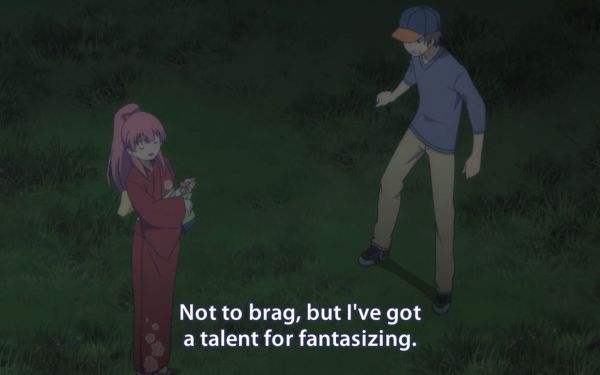
“Not to brag, but I’ve got a talent for fantasizing.” As a neurotypical human, you probably don’t need meticulous text files, spreadsheets and dice to maintain the integrity of your fantasies. Wait, do human fantasies even have integrity? And why don’t I know for sure?
If I have been failing to update my journal regularly, it is not because I have been lost in prayer, alas, but quite the opposite: Because I have been lost in unusually intricate daydreams.
I have come to understand that a favorite brain activity of neurotypical humans is to daydream of what could have been if they were able to change some event of the past. I am led to believe that this happens spontaneously, or very nearly so. But I am not a purebred neurotypical, I come from a family where autistic genes have run for at least three generations now. Judging from self-observation, I probably have a few of them myself, although I am not a purebred Aspie either. More of a half-breed, I guess. But daydreaming is one of the things that is probably different. I strongly doubt there are many neurotypical humans who use spreadsheets or dice in their daydreaming.
I am told that autists don’t daydream, but I do. Sort of. Lately, I have done a great deal of time traveling in my mind, branching off from various times in my past, creating alternate time lines with various differences from the original. I have written down summaries of a number of these in text files, one file for each major timeline. I have a spreadsheet in which I track a parameter of divergence. I roll three 6-sided dice to simulate randomness in some of the outcomes. That’s just the way I roll! ^_^
In the online superhero comic Mindmistress, my old acquaintance Al Schroeder wrote about a mentally challenged young woman who became super-intelligent through a technology developed by her late mother. After the heroine learned about role-playing games, her super-intellect created an interior world into which she disappeared and almost didn’t escape alive. As a father of two full-scale autistic sons, Schroeder probably had an idea of what he was talking about. One theory of autism is that it is not a lack, but a superabundance of brain activity, amplifying normal stimuli beyond what ordinary people experience. In favor of this theory is the fact that the brains of autistic infants grow faster than those of neurotypicals of the same age.
Luckily, I too survived my immersion in my elaborate daydream, although I was at some risk, and may still be. There are still timelines I would wish to revisit, if I think I can do so safely. And I still have my spreadsheet and my dice at hand. But for now, I write this entry.
